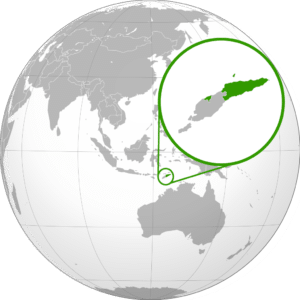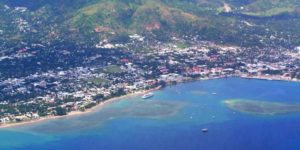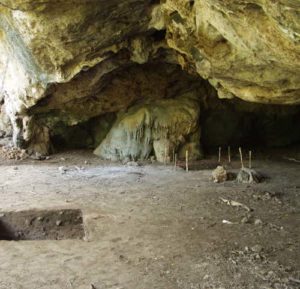Introduction:
East Timor or Timor-Leste, officially the Democratic Republic of Timor-Leste, is an island country in Southeast Asia. It comprises the eastern half of the island of Timor, the nearby islands of Atauro and Jaco, and Oecusse, an exclave on the northwestern side of the island surrounded by Indonesian West Timor. Australia is the country’s southern neighbor, separated by the Timor Sea. The country’s size is about 15,007 square kilometres (5,794 sq mi).

East Timor was colonized by Portugal in the 16th century and was known as Portuguese Timor until 28 November 1975, when the Revolutionary Front for an Independent East Timor (Fretilin) declared the territory’s independence. Nine days later, it was invaded and occupied by the Indonesian military; it was declared Indonesia’s 27th province the following year. The Indonesian occupation of East Timor was characterized by a highly violent, decades-long conflict between separatist groups (especially Fretilin) and the Indonesian military.

In 1999, following the United Nations-sponsored act of self-determination, Indonesia relinquished control of the territory. As Timor-Leste, it became the first new sovereign state of the 21st century on 20 May 2002 and joined the United Nations and the Community of Portuguese Language Countries. In 2011, East Timor announced its intention to become the eleventh member of the Association of Southeast Asian Nations (ASEAN). It is one of only two predominantly Christian nations in Southeast Asia, the other being the Philippines, as well as the only country of Asia to be located completely in the Southern Hemisphere.
History:
Prehistory:
Cultural remains at Jerimalai on the eastern tip of East Timor have been dated to 42,000 years ago, making that location one of the oldest known sites of modern human activity in Maritime Southeast Asia. Descendants of at least three waves of migration are believed still to live in East Timor. The first is described by anthropologists as people of the Veddo–Australoid type. Around 3000 BC, a second migration brought Melanesians. The earlier Veddo-Australoid peoples withdrew at this time to the mountainous interior. Finally, proto-Malays arrived from south China and north Indochina. Hakka traders are among those descended from this final group.

Timorese origin myths tell of ancestors who sailed around the eastern end of Timor arriving on land in the south. Some stories recount Timorese ancestors journeying from the Malay Peninsula or the Minangkabau highlands of Sumatra. Austronesians migrated to Timor, and are thought to be associated with the development of agriculture on the island.
Classical Era:
Before European colonialism, Timor was included in Indonesian/Malaysian, Chinese, and Indian trading networks, and in the 14th century was an exporter of aromatic sandalwood, slaves, honey, and wax. From the 1500s, the Timorese people had military ties with the Luções of present-day northern Philippines. It was the relative abundance of sandalwood on Timor that attracted European explorers to the island in the early 16th century. At around that time, European explorers reported that the island had a number of small chiefdoms or princedoms.
Colonial Era:
Portuguese period (1769–1975):
The Portuguese established outposts in Timor and Maluku. Effective European occupation of a small part of present-day East Timor began in 1769 when the city of Dili was founded and the colony of Portuguese Timor declared. A definitive border between the Dutch-colonized western half of the island and the Portuguese-colonized eastern half was established by the Permanent Court of Arbitration of 1914, and it remains the international boundary between the successor states Indonesia and East Timor, respectively. For the Portuguese, East Timor remained little more than a neglected trading post until the late nineteenth century, with minimal investment in infrastructure, health, and education. Sandalwood continued to be the main export crop with coffee exports becoming significant in the mid-nineteenth century.
